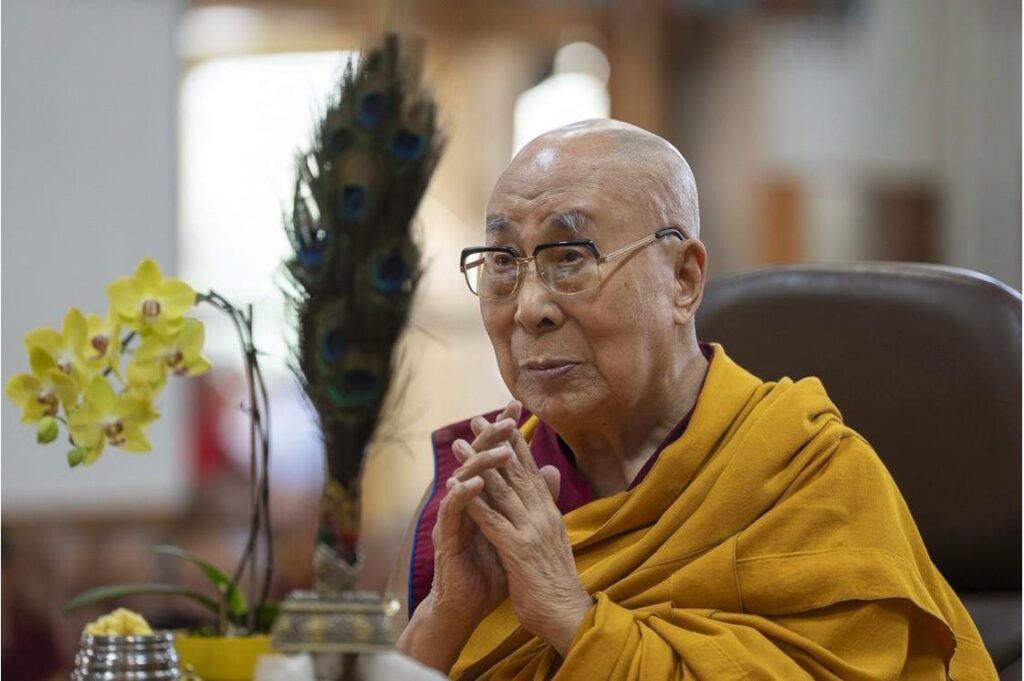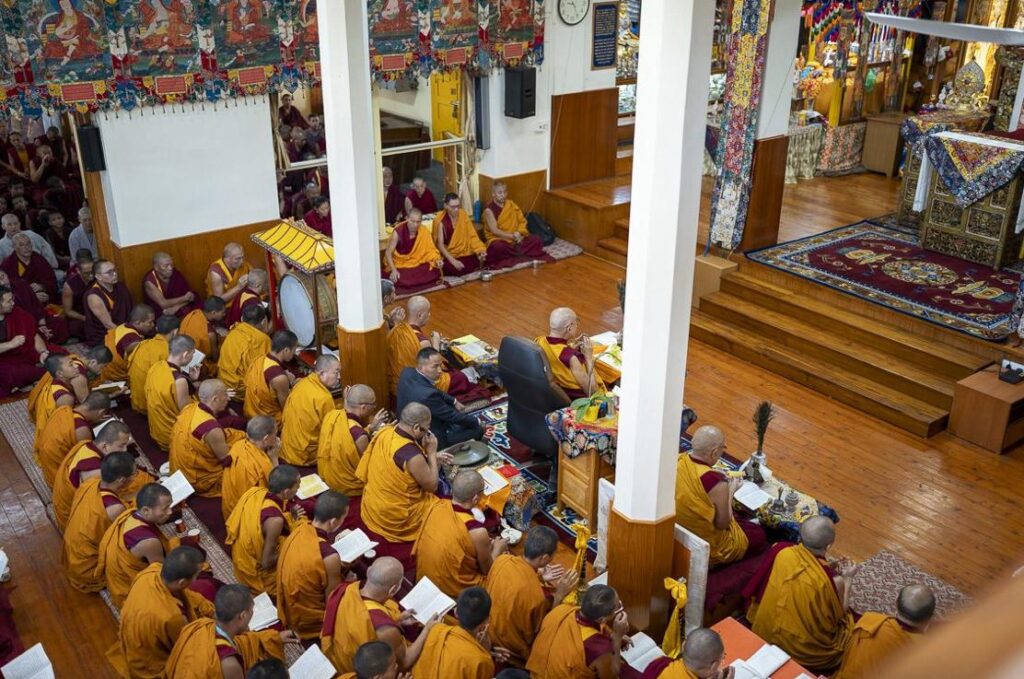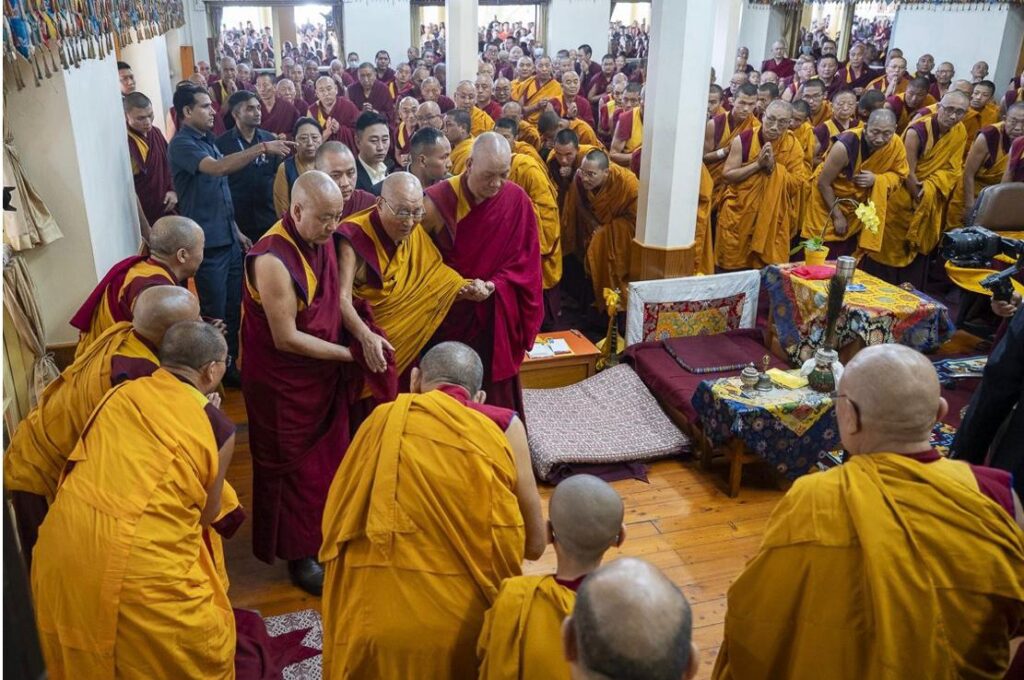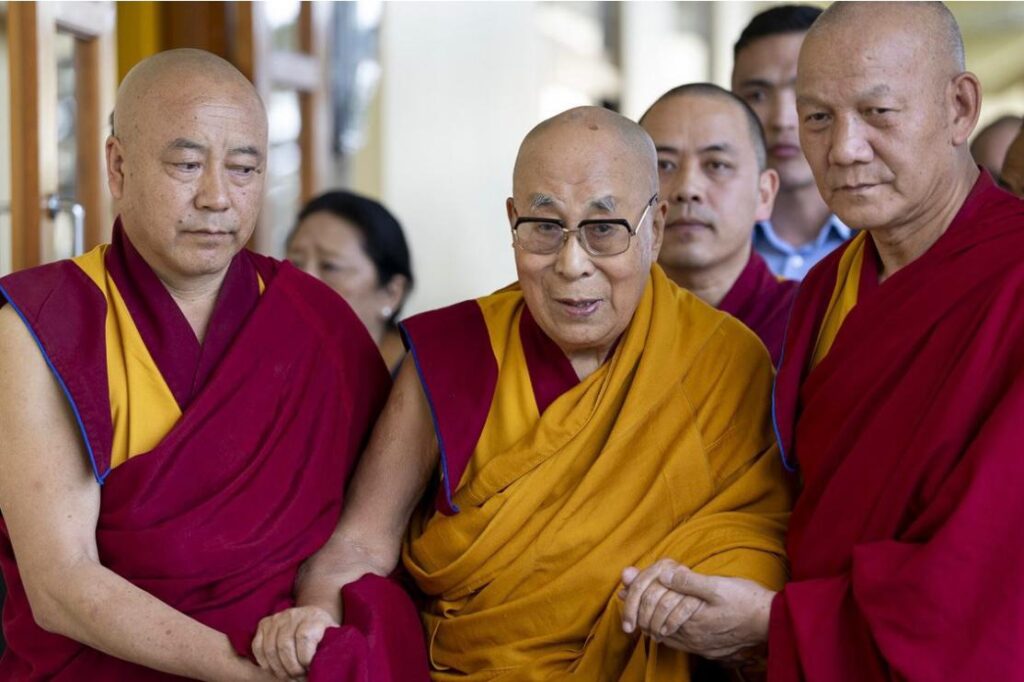Title Page Separator Site title
Introduction:
The Dalai Lama is the highest religious leader of Tibetan Buddhism. He is not just a religious guru, but also a symbol of spiritual and cultural identity for Tibet. The current 14th Dalai Lama is Tenzin Gyatso, who was born in 1935 in Takser village of Tibet. He came to India in 1959 after China’s occupation of Tibet and since then he has been leading the Tibetans in exile in Dharamsala (Himachal Pradesh).
Now that he is 89 years old, who will be the next Dalai Lama has become a big question. Not only religious traditions are active regarding this selection process, but the political wishes and diplomatic equations of countries like China and India have also become involved in it.


The selection process of the Dalai Lama: Traditional method
The Dalai Lama is considered a symbol of reincarnation. According to Buddhist beliefs, the Dalai Lama is an incarnation of the Bodhisattva of Compassion (Avalokiteśvara), who returns to the world as a reincarnation after his previous life to work for the welfare of all beings.
The traditional process of identifying the Dalai Lama is as follows:
1. Premonition: The current Dalai Lama gives some indication of the place of rebirth before or after his death. Sometimes he gives this indication verbally, sometimes through a dream or as a spiritual sign.
2. High Lama Team: After the Dalai Lama dies, a team of Tibetan Buddhist monks (especially members of the Ganden Phodrang) goes out to search for a possible reincarnation. They go to the areas where they have received indications.
3. Testing: The child who is suspected is put through a number of tests. For example, the objects of the old Dalai Lama are placed in front of new children. The child who identifies the correct objects is considered to be reborn.
- Recognition: The selected boy is declared the Dalai Lama and is given monk education. He is handed over spiritual and philosophical teachings.
China’s stand: Political control over religious tradition
China, which has militarily occupied Tibet in 1950, wants to take control of the Dalai Lama tradition. China claims that it will control the “reincarnation process” and the next Dalai Lama will be its chosen one. For this, China has ordered under the “Control on Religious Affairs Act” (Order No. 5, 2007) that the reincarnation of all living Buddhas (lamas) will not be valid without government permission.
This stand of China is an attempt to legitimize its “complete dominance over Tibet”. Beijing has been calling the Dalai Lama a “disruptive element” and is worried that the next Dalai Lama may be anti-China. Therefore, it wants a Dalai Lama who is in line with its policies.
China has already intervened in the appointment of the 11th Panchen Lama in 1995. The real Panchen Lama was kidnapped and a government boy was declared Panchen Lama, which is still disputed.https://www.reuters.com/world/us/


India’s View: Cautious Support
India has been providing shelter to the Dalai Lama and the Tibetan government in exile since 1959. Dharamsala is home to the Tibetan Government-in-Exile, which talks about protecting Tibetan culture and human rights all over the world. India has always described Tibet as “a cultural issue”, but due to maintaining diplomatic balance with China, it does not directly get involved in the dispute over the succession of the Dalai Lama.
However, India has made it clear that the appointment of the Dalai Lama is a matter related only to the Tibetan people and tradition. India also believes that the process of Tibetan Buddhism should be kept free from external interference. Therefore, if in future China declares an “official Dalai Lama”, then India can challenge his legitimacy.
For India, the issue is not just religious but also strategic. Tibet used to be a strategic “buffer zone” between India and China. If India recognises the Chinese-appointed Dalai Lama, it will further strengthen China’s claim on Tibet.
Tibetan public sentiment and role of exile community
The Tibetan community, especially Tibetans in exile in India, Nepal and Europe, traditionally recognise only a religiously identified Dalai Lama. They will never accept a Dalai Lama with official or Chinese backing.
The 14th Dalai Lama himself has said that he may identify his successor while he is alive, to prevent China from interfering. He has also indicated that the next Dalai Lama may be born in India, or he may end the tradition if it is in the interest of Tibetan religion.
Possibilities and challenges
The world’s eyes are fixed on Tibet, India and China regarding the process of succession of the Dalai Lama. The following challenges emerge in this process:
Situation of two Dalai Lamas: If China declares its own Dalai Lama and the Tibetan spiritual leader declares his own, then the world will be confused as to whom to recognize. This situation can create conflict and discontent among the Tibetan community.
International support: Countries like America and Europe remain vocal on the issue of Tibet, but due to the growing power of China, they too are able to intervene only to a limited extent. America has already said that only the Tibetan community has the right to select the Dalai Lama.
Crisis of culture and existence: If the Dalai Lama of China is imposed in Tibet, then the traditional culture there can suffer a serious blow. This will also be a spiritual crisis for the Tibetan religion.
Conclusion:
The Dalai Lama’s succession process is not a simple religious selection, but it is a sensitive issue related to Tibetan identity, religion and politics. This process not only symbolizes the protection of the Tibetan tradition, but it will also determine the identity of Tibetan Buddhism in the future – independent or subservient to some power.
For India, this issue is related to its value of religious tolerance, diplomatic balance and strategic interests. Whereas China considers it the foundation of its dominance.
It will be interesting to see in the coming years whether the Tibetan tradition will be able to protect its religious freedom or a political power will twist this spiritual succession for its own interests.https://beingbrij.com/
